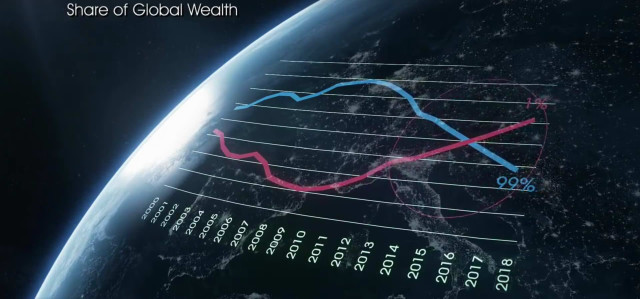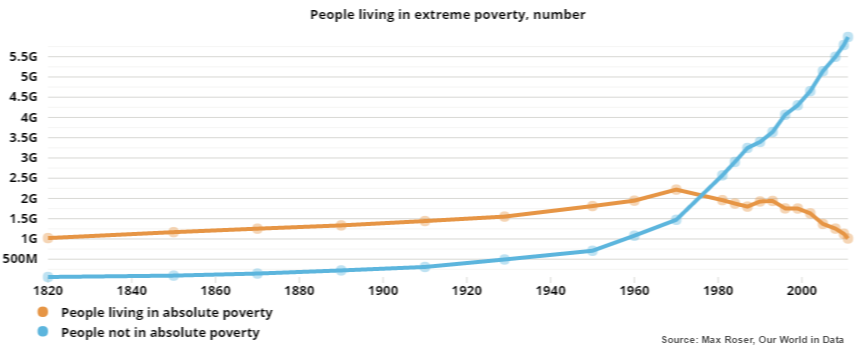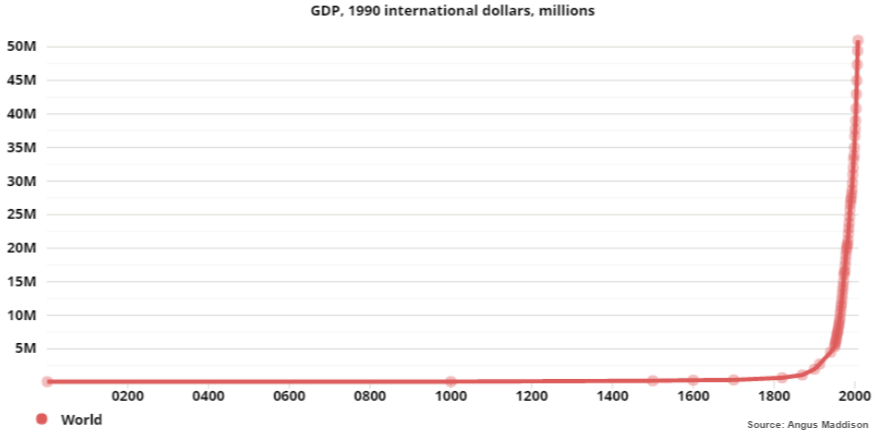The Biden Administration Says U.S. Not in a Recession, but Federal Statutes Say Otherwise. Who is Right?

Is the U.S. economy in recession? The answer is, paradoxically, both easier and more complicated than you might think.
As expected the United States posted negative growth for the second consecutive quarter, according to government data released on Thursday.
“Real gross domestic product (GDP) decreased at an annual rate of 0.9 percent in the second quarter of 2022, following a decrease of 1.6 percent in the first quarter,” the US Bureau of Economic Analysis announced.
The news prompted many outlets, including The Wall Street Journal, to use the R word—recession, which historically has been commonly defined as “economic decline during which trade and industrial activity are reduced, generally identified by a fall in GDP in two successive quarters.”
US economy shrank 0.9% last quarter, its 2nd straight drop and signaling a recession. https://t.co/ZvuPqvJk5R
— Marta Dhanis (@MartaDhanis) July 28, 2022
#BREAKING: US economy slips into recession?
The GDP decreased at an annual rate of 0.9 percent in the second quarter of 2022, following a drop of 1.6 percent in the first quarter.https://t.co/yPDPpvkkSs
— Emel Akan (@mlakan) July 28, 2022
The White House does not agree, however, and following the release of the data, President Biden said the US economy is “on the right path.”
The comments come as little surprise. Treasury Secretary Janet Yellen had recently hinted that the White House would contend the economy wasn’t actually in a recession even if Q2 data indicated the economy had contracted for a second consecutive quarter.
“There is an organization called the National Bureau of Economic Research that looks at a broad range of data in deciding whether or not there is a recession,” Yellen said. “And most of the data that they look at right now continues to be strong. I would be amazed if they would declare this period to be a recession, even if it happens to have two quarters of negative growth.”
“We have a very strong labor market,” she continued. “When you are creating almost 400,000 jobs a month, that is not a recession.”
After historic economic growth – regaining all private sector jobs lost during the pandemic – we knew the economy would slow down as the Fed acts on inflation.
Our job market is strong, spending is up, and unemployment is down. We have the resilience to weather the transition.
— President Biden (@POTUS) July 28, 2022
The Gramm-Rudman-Hollings Act of 1985?
Yellen is not wrong that NBER, a private nonprofit economic research organization, looks at a much broader swath of data to determine if the economy is in a recession, or that many view NBER’s Business Cycle Dating Committee as the “official recession scorekeeper.”
So White House officials have a point when they say “two negative quarters of GDP growth is not the technical definition of recession,” even though it is a commonly used definition.
Biden official: "As Secretary Yellen said on Sunday, two negative quarters of GDP growth is not the technical definition of recession." pic.twitter.com/ZSxbDISmHw
— The Post Millennial (@TPostMillennial) July 26, 2022
On the other hand, it’s worth noting that federal statutes, the Congressional Budget Office, and other governing bodies use the two consecutive quarters of negative growth as an official indication of economic recession.
Phil Magness, an author and economic historian, points out that several “trigger” provisions exist in US laws (and Canadian law) that are designed to go into effect when the economy posts negative growth in consecutive quarters.
“For reference, here is the definition used in the Gramm-Rudman-Hollings Act of 1985,” Magness wrote on Twitter, referencing a clause in the Act. “This particular clause has been subsequently retained and replicated in several trigger clauses for recessionary measures in US federal statutes.”
It’s worth noting that Magness doesn’t contend the two consecutive quarters definition is the best method of determining whether an economy is in a recession, but simply points out that claims that it’s an “informal” definition of recession are untrue.
“It may not be a perfect metric, but it has a very long history of being used to determine policy during recessions,” Magness writes.
Can someone point me to the place in the United States Code where the statutes make NBER the "official" arbiter of recessions?
Because I can show you several places where federal statutes use the "two consecutive quarters of declining real GDP" definition.
— Phil Magness (@PhilWMagness) July 25, 2022
‘The Worst Banana in 45 Years’
Some readers may find it strange that so much heat, ink, and energy is being spent on something as intangible as a word, which is a mere abstraction that has no value. And some policy experts agree.
“Whether [we’re] in a technical recession is less interesting to me than the following 3 questions,” Brian Riedl, an economist at the Manhattan Institute, recently said. “1) Are jobs plentiful? (Yes – good) 2) Are real wages rising? (Falling fast – bad) 3) Is inflation hitting fixed income fams? (Yes – bad.)”
Whether were in a technical recession is less interesting to me than the following 3 questions:
1) Are jobs plentiful? (Yes – good)
2) Are real wages rising? (Falling fast – bad)
3) Is inflation hitting fixed income fams? (Yes – bad)So, 2 of 3 are trending badly = worrisome.
— Brian Riedl 🧀 🇺🇦 (@Brian_Riedl) July 25, 2022
Others contend that definitions matter, and that by ignoring the legal definition of recession, the Biden White House can continue to argue that the US economy is “historically strong” even as economic growth is negative, inflation is surging, and real wages are crashing.
As Charles Lane recently pointed out in the Washington Post, words have power. He shares a colorful anecdote involving Alfred E. “Fred” Kahn, an economist who served in the Carter Administration who was instructed to never use the words “recession” or “depression” again.
In 1978, Kahn — a Cornell University economist in charge of President Jimmy Carter’s inflation-fighting efforts — said that failure to get soaring prices under control could lead to a “deep, deep depression.” Carter’s aides, perturbed at the possible political fallout, instructed him never to say that word, or “recession,” again.
We don’t know whether this instruction stirred the wrath of Kahn, a verbal stickler notoriously disdainful of cant and euphemism; in a previous government job, he had sent around a memo telling staff not to use words like “herein.”
It did trigger his wit, though: In his next meeting with reporters, Kahn puckishly said the nation was in “danger of having the worst banana in 45 years.”
‘Bureaucratic Weathermen’?
Lane’s anecdote about Kahn is instructive because it reveals something important about these debates. While they may have a certain amount of importance as far as political spin goes, they are meaningless as far as economic reality is concerned. Substituting the word “banana” for recession did not change economic conditions or the economic outlook one bit, which no doubt was precisely Lane’s point.
My colleague Peter Jacobsen made this point effectively earlier this week.
“[You] don’t need a thermometer to feel if it’s hot outside,” he wrote. “Economic issues, especially inflation, top the list of concerns for voters going into the 2022 midterms, and it isn’t particularly close. So officially defined recession or not, it doesn’t really matter.”
Moreover, Jacobsen explains, macroeconomic data like GDP have historically been the tool of politicians and bureaucrats, who use them to justify economic interventions.
“When GDP numbers fall below a certain level, politicians can use that data to try to push income back up. Or perhaps when the economy is ‘running too hot’ politicians can use fiscal and monetary policy to slow down the economy.
All of these metaphors about economies running hot or stalling are based on a central planning view of the economy. In this view, the economy is like a machine which we can adjust to bring about the proper results. Without macroeconomic statistics, central planners have fewer means by which to justify particular interventions. We can’t claim we need stimulus if we can’t point to some data indicating it’s necessary.”
The takeaway here is an important one. We don’t need “bureaucratic weathermen” telling us when the economy is good or bad anymore than we need them “managing” the economy with the money supply, which is precisely how we got here in the first place.
It doesn’t matter if we have stagflation or a recession.
What matters is that Americans are hurting financially, that this outcome was caused by govt and Fed policy, and that it was completely avoidable.
— Carol Roth (@caroljsroth) July 27, 2022
So while the debates over the R word are likely to continue, it’s important to remember it doesn’t really matter if you call this economy a recession or a banana. The fundamentals speak for themselves.
AUTHOR
Jon Miltimore
Jonathan Miltimore is the Managing Editor of FEE.org. His writing/reporting has been the subject of articles in TIME magazine, The Wall Street Journal, CNN, Forbes, Fox News, and the Star Tribune. Bylines: Newsweek, The Washington Times, MSN.com, The Washington Examiner, The Daily Caller, The Federalist, the Epoch Times.
RELATED VIDEO: GDP Report Shows Economic Plunge
EDITORS NOTE: This FEE column is republished with permission. ©All rights reserved.








